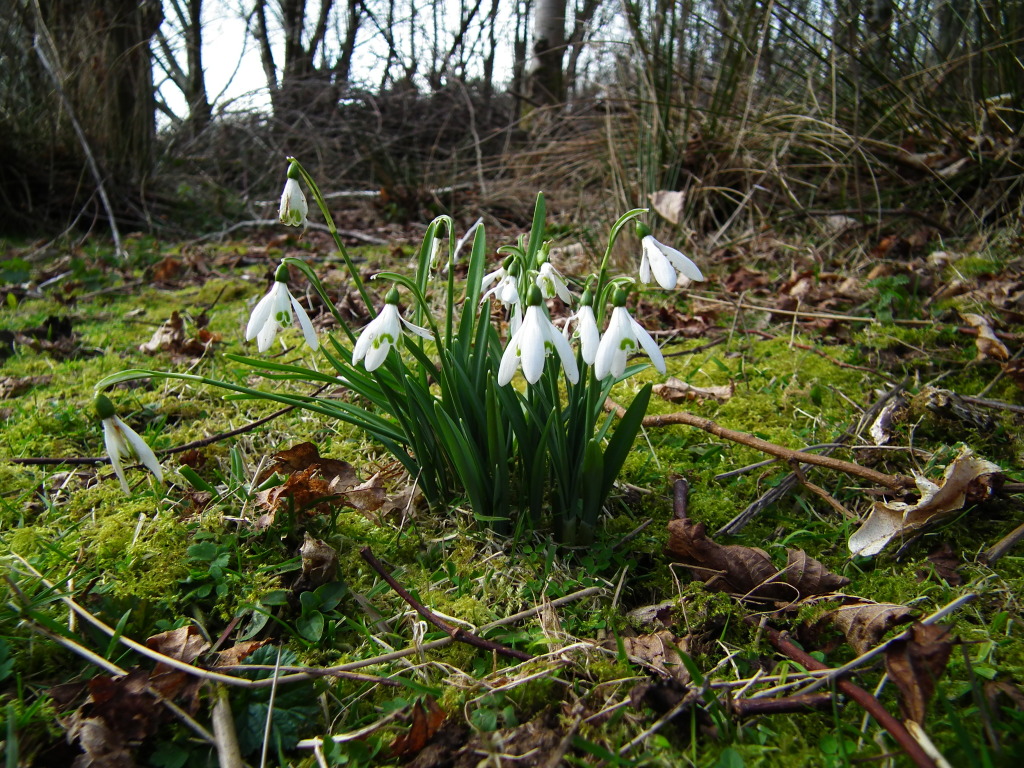Walk 1, March 2015
New leaves on Rosa rugosa
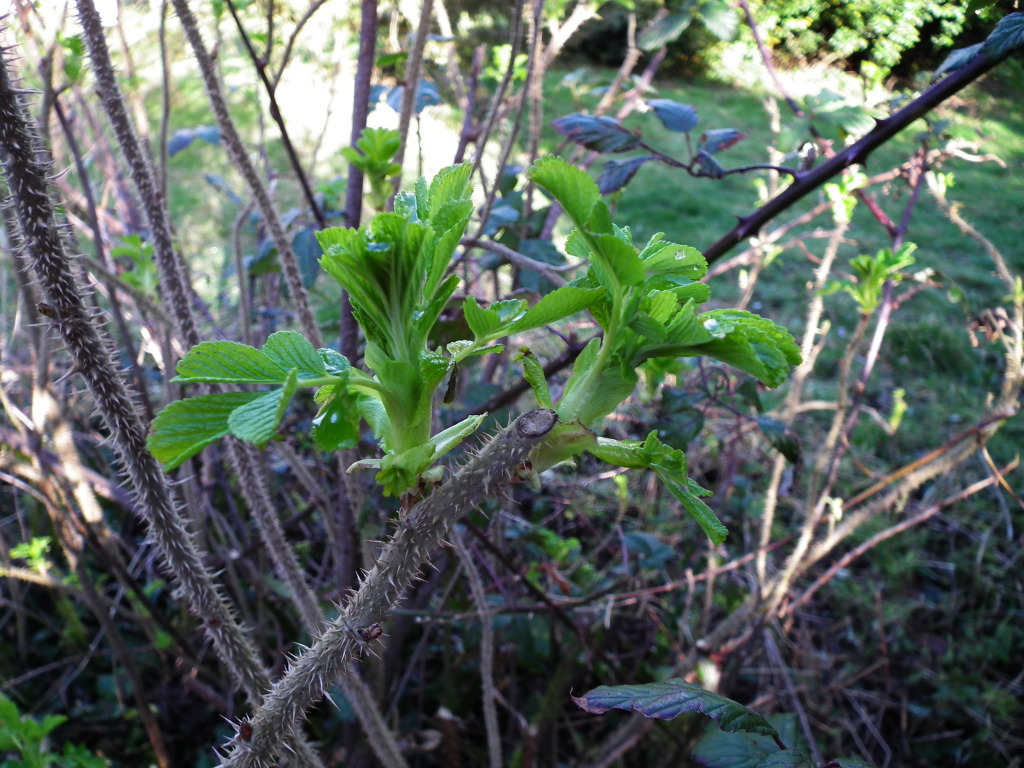 It’s always a moment of magic when dormant stems break into leaf. Life renewed. It gives hope. Rosa rugosa has large luscious hips from August to October. They are much larger, sweeter and nicer than the native wild rose hips, and they are good to eat just as they are (after removing the seeds with a knife, as they are coated with irritant hairs).
It’s always a moment of magic when dormant stems break into leaf. Life renewed. It gives hope. Rosa rugosa has large luscious hips from August to October. They are much larger, sweeter and nicer than the native wild rose hips, and they are good to eat just as they are (after removing the seeds with a knife, as they are coated with irritant hairs).
Eleagnus cordifolia fruits
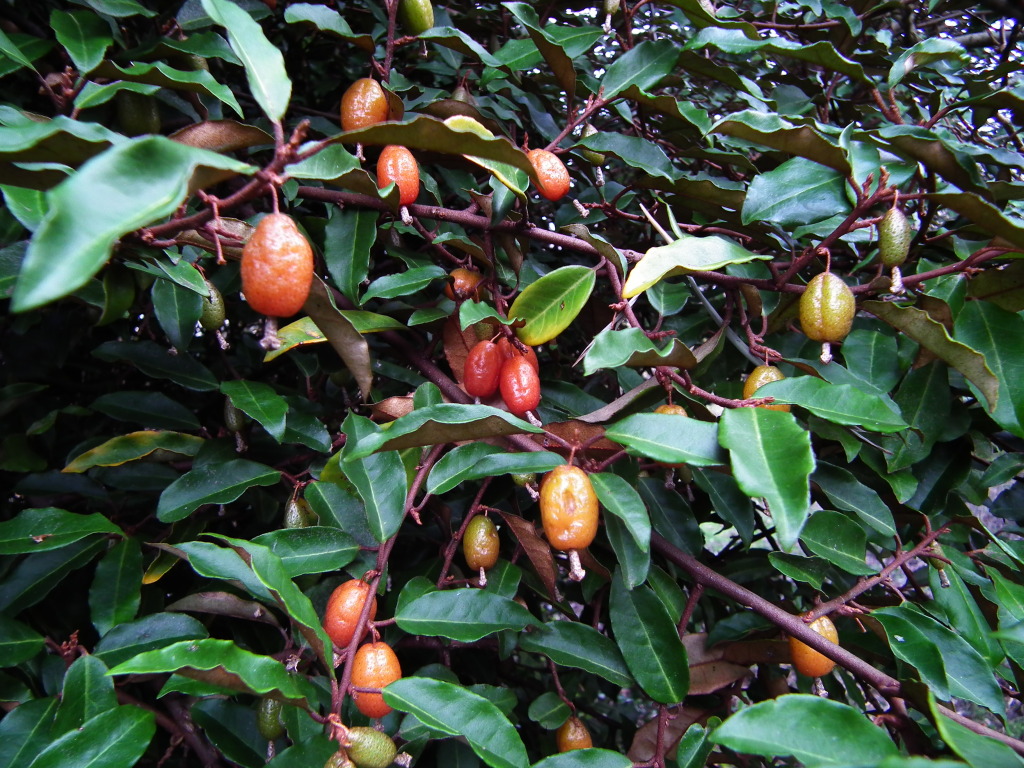
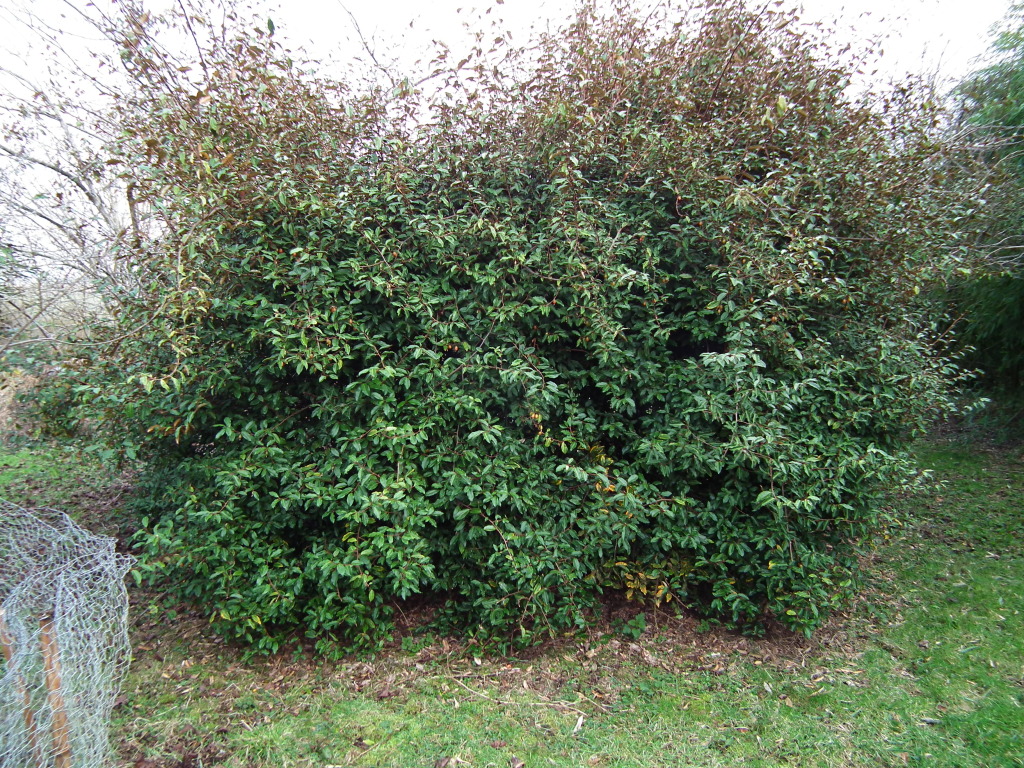 These give us the first fresh fruits of the year! They are also a superfood, being very rich in essential micronutrients as well as containing essential fatty acids and bioflavonoids. Wait till they are ripe – or pick them a little unripe and ripen them indoors – as they are rather astringent otherwise.
These give us the first fresh fruits of the year! They are also a superfood, being very rich in essential micronutrients as well as containing essential fatty acids and bioflavonoids. Wait till they are ripe – or pick them a little unripe and ripen them indoors – as they are rather astringent otherwise.
Eleagnus fixes nitrogen and also makes a good hedge.
Cornelian Cherry (Cornus mas) in flower
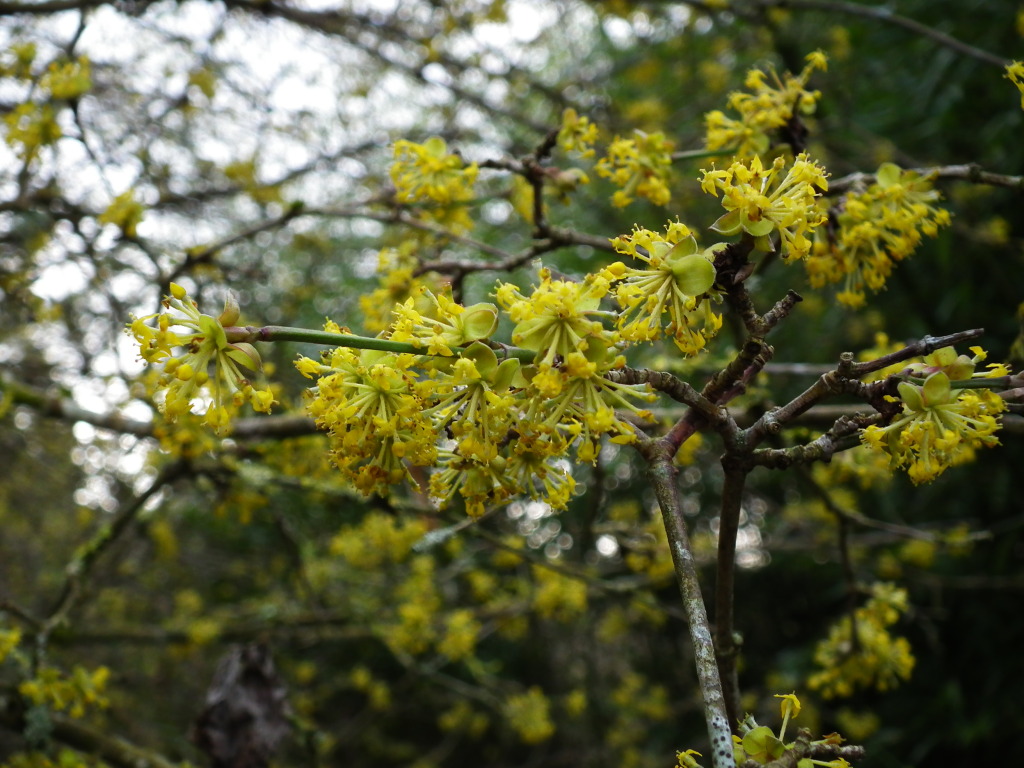
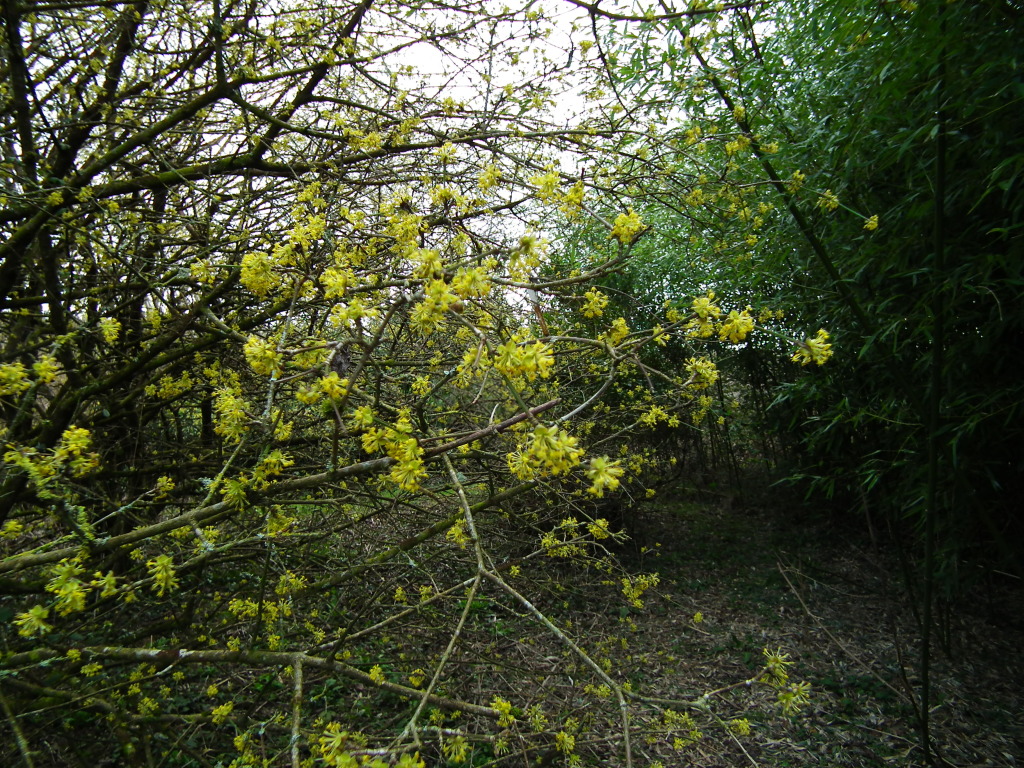 These beautiful little flowers always uplift my heart when I see them. Fruits ripen August–September.
These beautiful little flowers always uplift my heart when I see them. Fruits ripen August–September.
Masses of frog spawn in our pond!
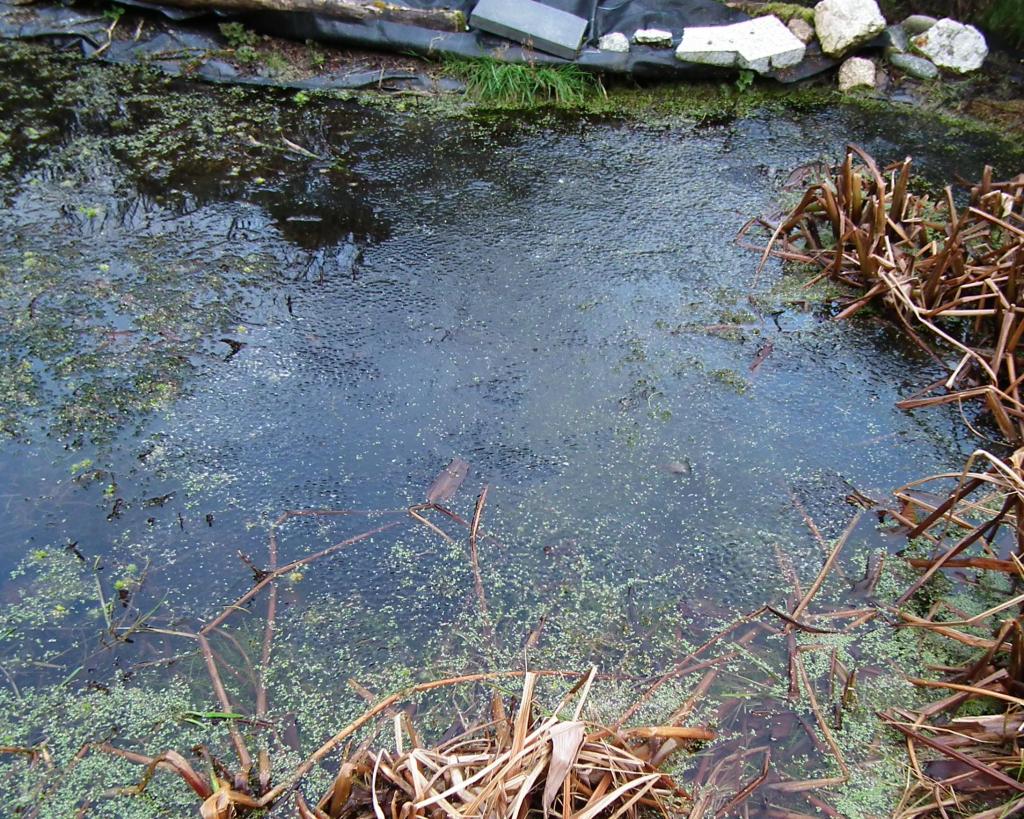
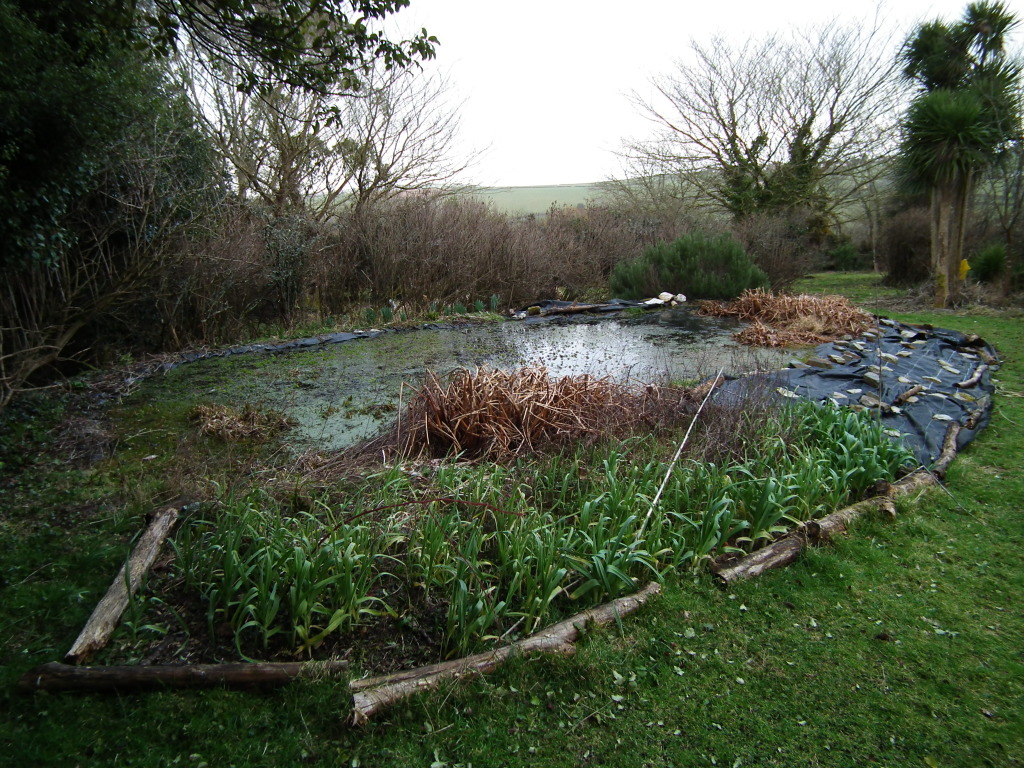 I always love this sign of spring, and I love watching the tadpoles grow. Frogs are of course an excellent biological control for slugs!
I always love this sign of spring, and I love watching the tadpoles grow. Frogs are of course an excellent biological control for slugs!
New leaves on Sea Buckthorn (Hippophae salicifolia)
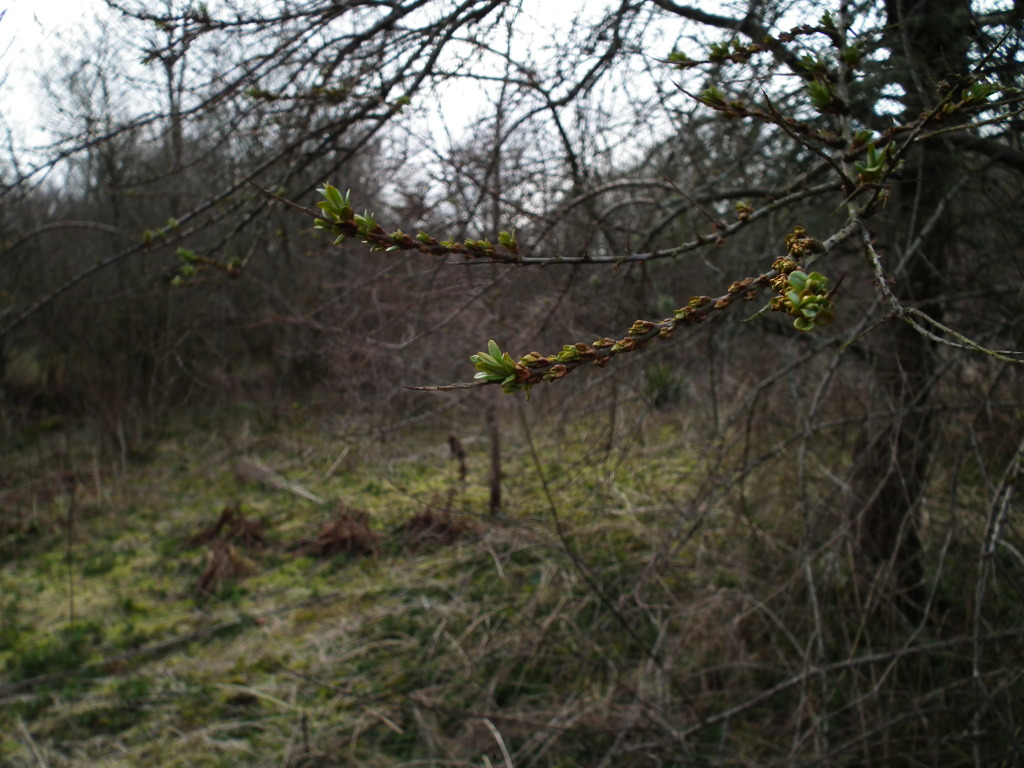 This is one of the most amazing trees on the land. The berries really are a superfood, being exceedingly rich in vitamin C, bioflavonoids and essential fatty acids. The trees fix nitrogen and are fast-growing and wind-resistant. Unlike many of the other berries, they have a long season of availability, with the first fruits ready to eat in August. The berries hang on the tree for much of the winter. Before the birds take everything I normally pick a supply of fruit-bearing twigs. The last of last year’s harvest were consumed (as a nutritious juice sweetened with liquorice tea) on 1 March this year.
This is one of the most amazing trees on the land. The berries really are a superfood, being exceedingly rich in vitamin C, bioflavonoids and essential fatty acids. The trees fix nitrogen and are fast-growing and wind-resistant. Unlike many of the other berries, they have a long season of availability, with the first fruits ready to eat in August. The berries hang on the tree for much of the winter. Before the birds take everything I normally pick a supply of fruit-bearing twigs. The last of last year’s harvest were consumed (as a nutritious juice sweetened with liquorice tea) on 1 March this year.
Flowers on Darwin’s Barberry (Berberis darwinii)
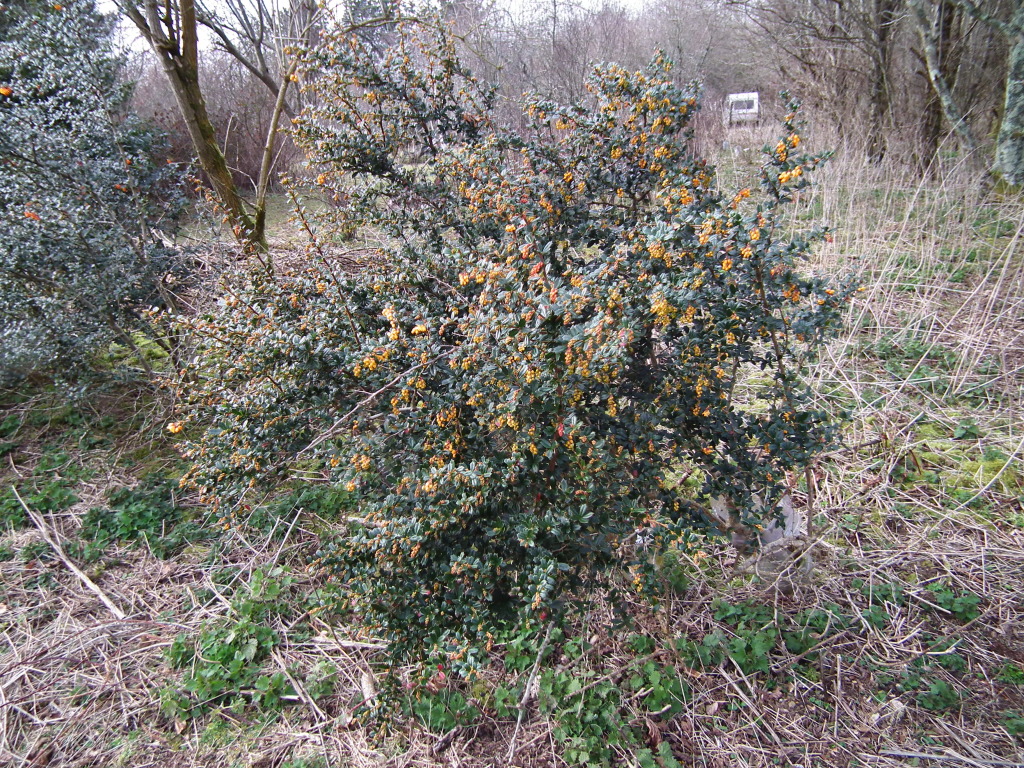
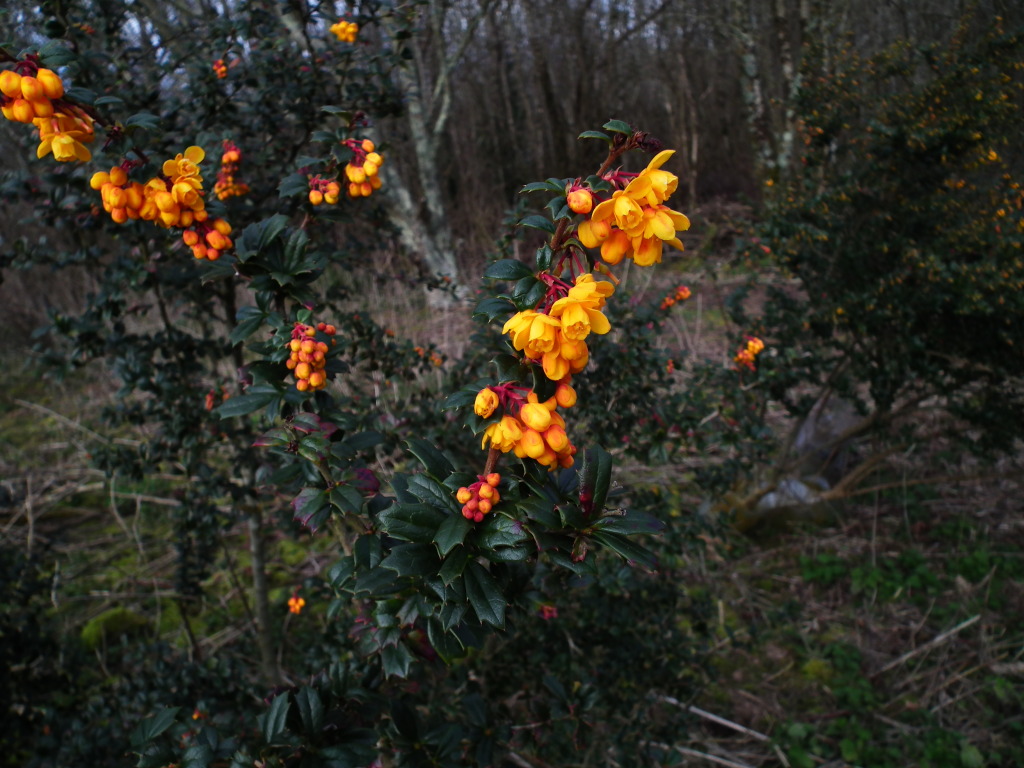 These are an extraordinarily bright and beautiful surprise when they first come out. The hedge normally becomes ablaze with them in March. The fruits ripen in July and cover the bushes. They are best eaten when soft and ripe, when they are juicy and energising. Barberries are good for cleansing the blood and urinary tract of infection, as well as being a nutritious high-fibre fruit.
These are an extraordinarily bright and beautiful surprise when they first come out. The hedge normally becomes ablaze with them in March. The fruits ripen in July and cover the bushes. They are best eaten when soft and ripe, when they are juicy and energising. Barberries are good for cleansing the blood and urinary tract of infection, as well as being a nutritious high-fibre fruit.
Monkey Puzzle (Araucaria araucana)
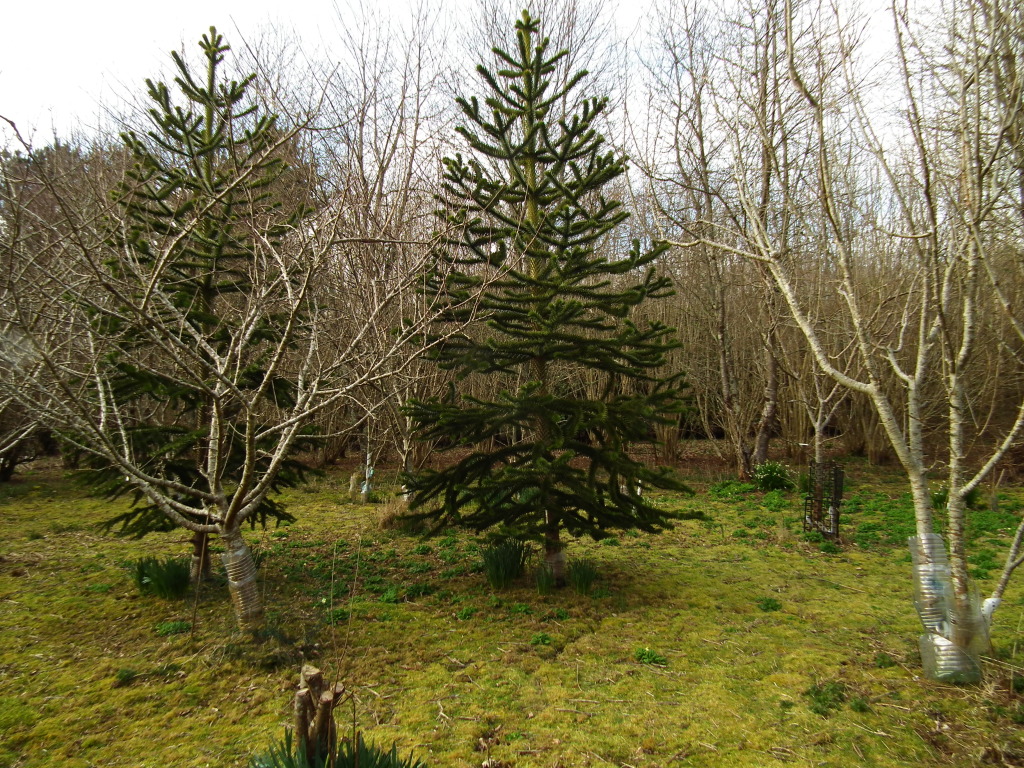 What a handsome specimen! When mature (this one has at least another 20 years to go) these trees produce cones the size of a human head, with edible seeds the size of almonds. Much less fiddly than pine kernels or sunflower seeds – but a long wait! Native to South America, they used to be a staple food for indigenous people.
What a handsome specimen! When mature (this one has at least another 20 years to go) these trees produce cones the size of a human head, with edible seeds the size of almonds. Much less fiddly than pine kernels or sunflower seeds – but a long wait! Native to South America, they used to be a staple food for indigenous people.
Babbington’s Leek (Allium ampeloprasum var. babbingtonii)
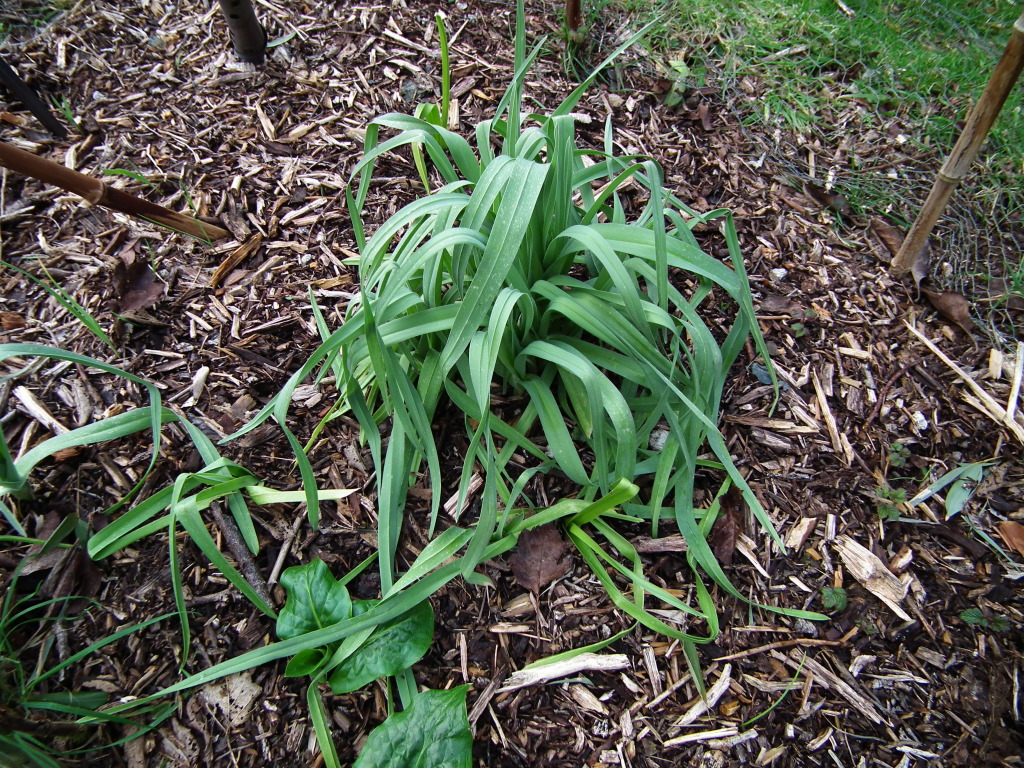 A very useful perennial leek, it can be eaten from March up to around May. Later in the year the bulbils that form on the ‘flowering’ stem can be used like garlic – as can the underground cloves if dug up from August onwards.
A very useful perennial leek, it can be eaten from March up to around May. Later in the year the bulbils that form on the ‘flowering’ stem can be used like garlic – as can the underground cloves if dug up from August onwards.
Three-cornered Leek (Allium triquetrum) and Lamb’s Lettuce (Valerianella locusta) growing in wood chips
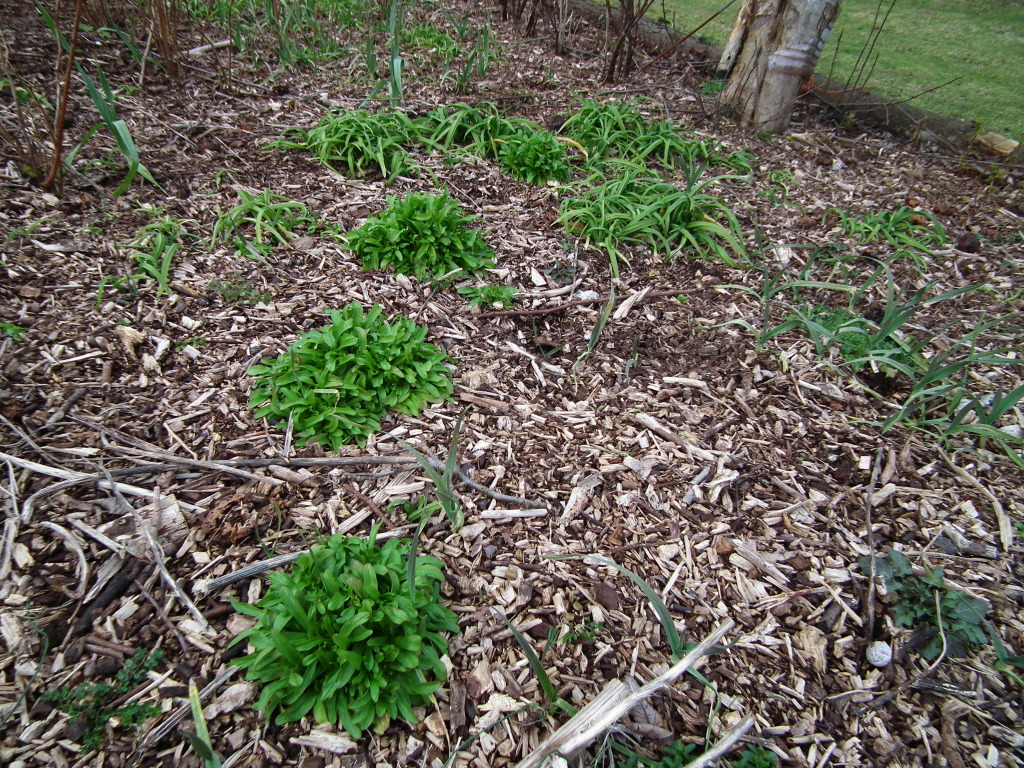 Three-cornered Leek is a great perennial salad plant, available in autumn, winter and spring. Lamb’s Lettuce is a tasty self-sowing salad leaf for winter into early summer.
Three-cornered Leek is a great perennial salad plant, available in autumn, winter and spring. Lamb’s Lettuce is a tasty self-sowing salad leaf for winter into early summer.
Milk Thistle (Silybum marianum)
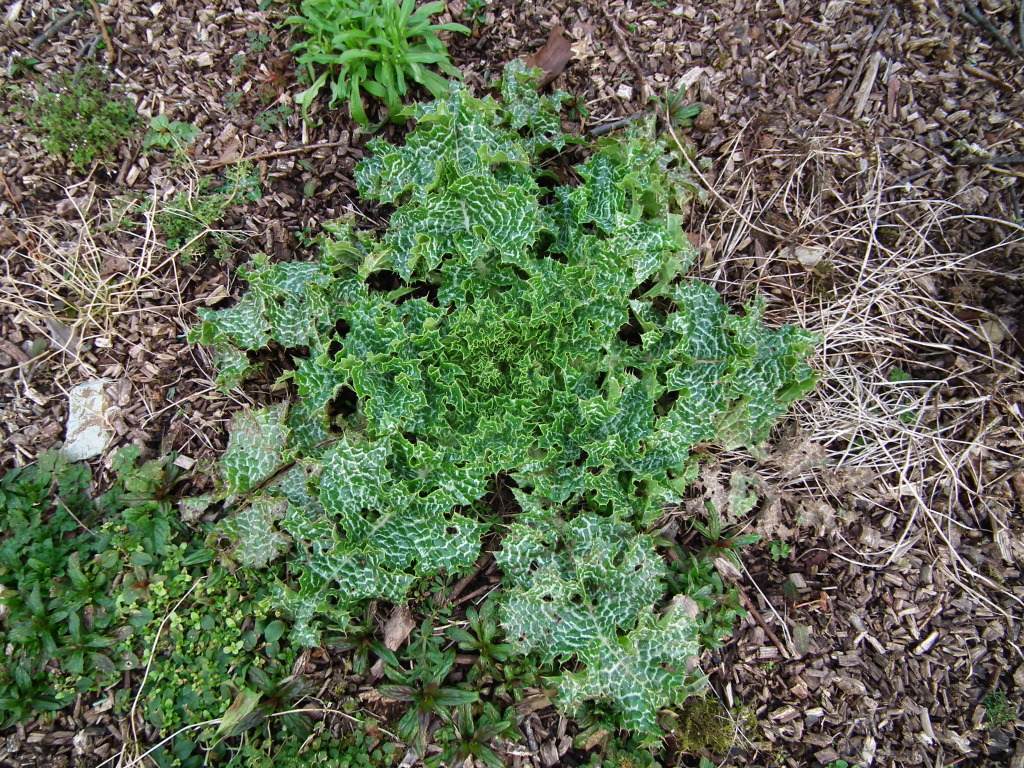 This beautiful plant takes its common name from the markings on the leaves. The seeds are an excellent liver tonic and help protect the liver from all kinds of toxin. If you have the patience to cut off the prickles, the leaves can be used as a salad – but maybe making a tea from them is an easier option.
This beautiful plant takes its common name from the markings on the leaves. The seeds are an excellent liver tonic and help protect the liver from all kinds of toxin. If you have the patience to cut off the prickles, the leaves can be used as a salad – but maybe making a tea from them is an easier option.
Hazel (Corylus avellana) catkins

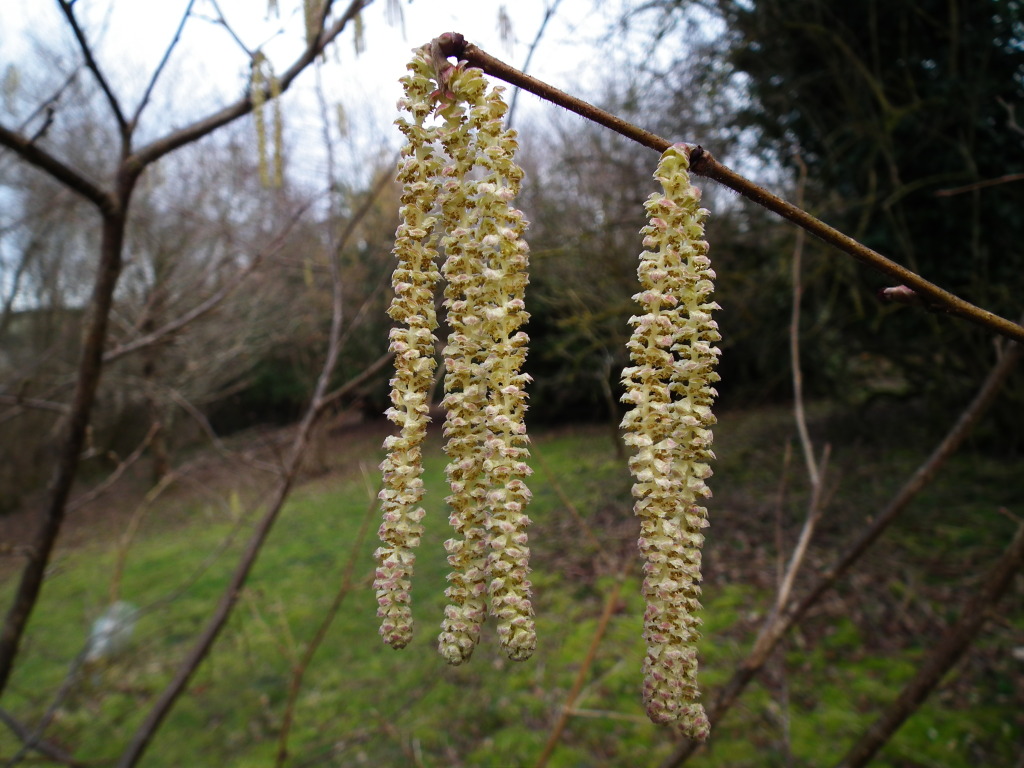 The seeds are a well-known source of protein and healthy fat. Harvest the nuts in September – but keep an eye out for squirrels, who often get there first!
The seeds are a well-known source of protein and healthy fat. Harvest the nuts in September – but keep an eye out for squirrels, who often get there first!
Male Yew (Taxus baccata) with cones at the pollen-releasing stage
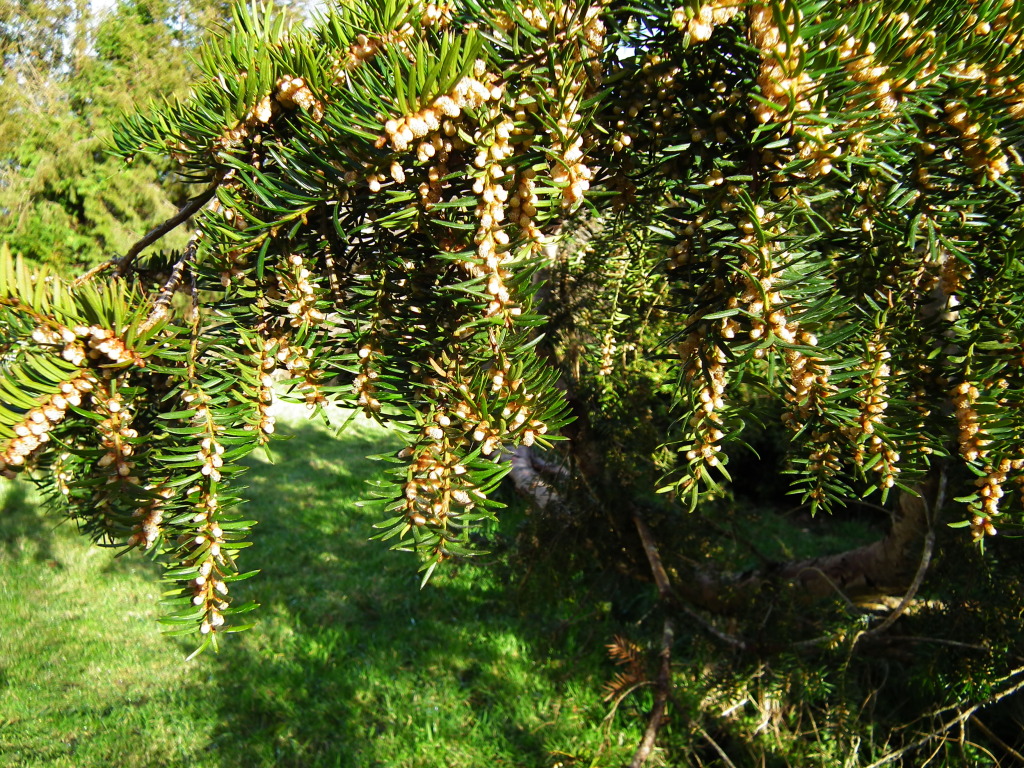 Yew is a highly toxic plant, except for the fleshy red arils that appear on the female trees from late summer into autumn. The arils resemble and function like fruits, but technically they are not fruits, because the Yew is a conifer. The arils are sweet and pleasant to eat – but please take care to spit out the seeds, as they are toxic if chewed. The Yew has long been considered a sacred tree, and it was often planted in graveyards. It has a very dense wood.
Yew is a highly toxic plant, except for the fleshy red arils that appear on the female trees from late summer into autumn. The arils resemble and function like fruits, but technically they are not fruits, because the Yew is a conifer. The arils are sweet and pleasant to eat – but please take care to spit out the seeds, as they are toxic if chewed. The Yew has long been considered a sacred tree, and it was often planted in graveyards. It has a very dense wood.
Wild Garlic (Allium ursinum)
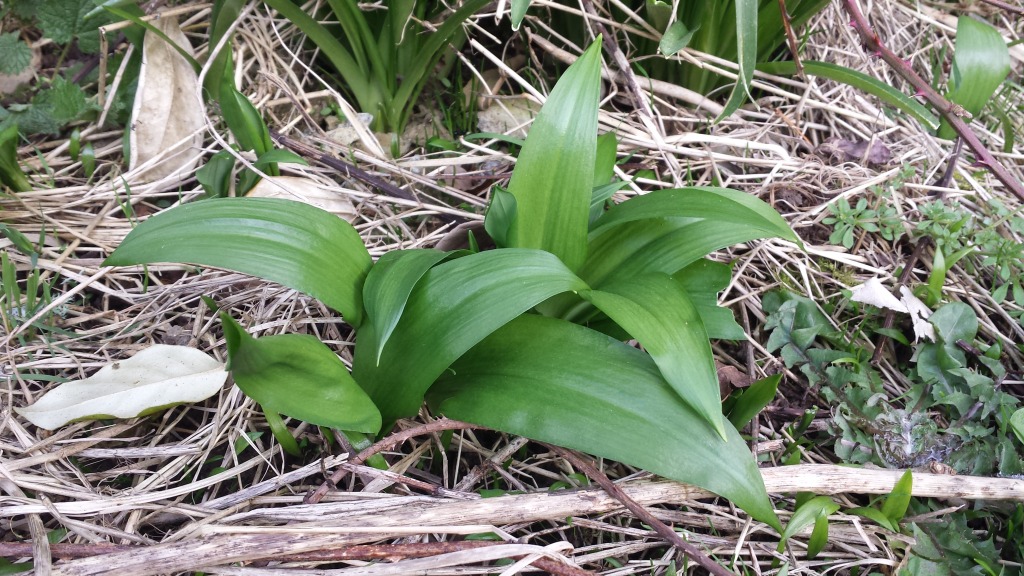
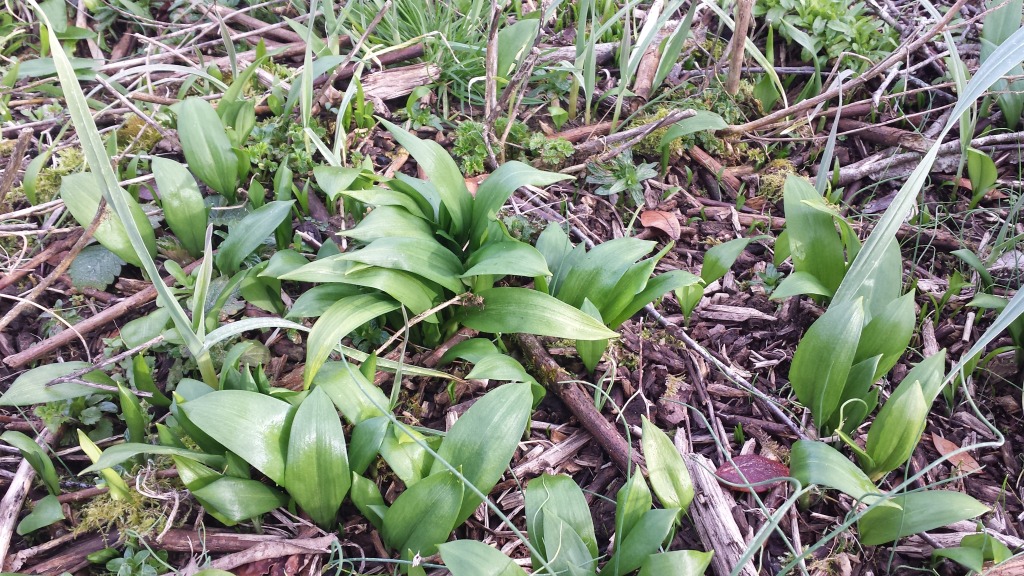 My favourite garlic! Edible raw or cooked. Garlic is a powerful antioxidant and it has many medicinal properties: it’s good for the heart, to dispel colds, as an antiseptic, for the digestion, etc. as well as being a wonderful flavouring.
My favourite garlic! Edible raw or cooked. Garlic is a powerful antioxidant and it has many medicinal properties: it’s good for the heart, to dispel colds, as an antiseptic, for the digestion, etc. as well as being a wonderful flavouring.
Nettle (Urtica dioica)
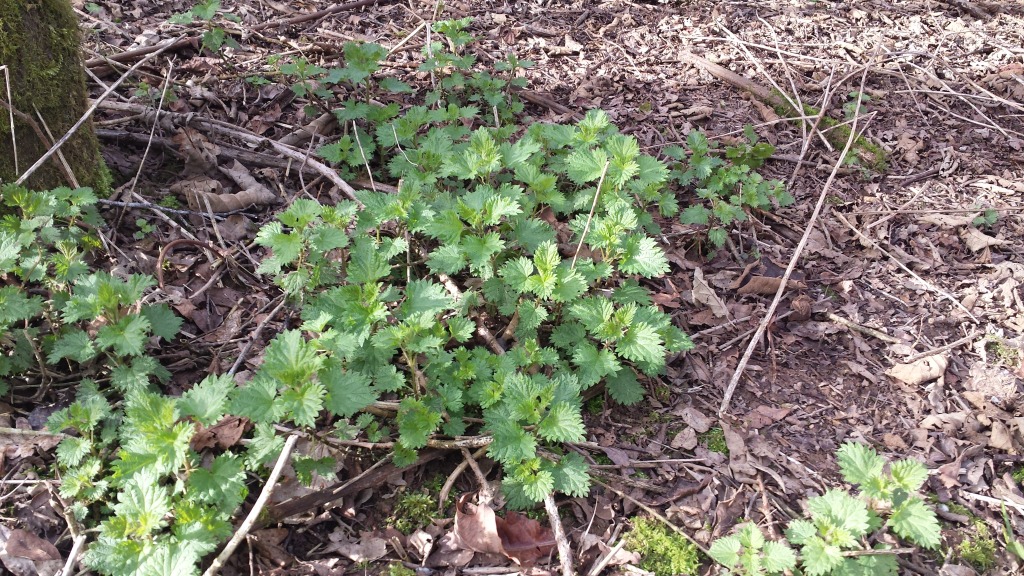 The young shoots are highly nutritious, mineral rich and good for cleansing the blood. They can be cooked like spinach. (Please use gloves while picking!)
The young shoots are highly nutritious, mineral rich and good for cleansing the blood. They can be cooked like spinach. (Please use gloves while picking!)
Sweet Violet (Viola odorata) flowers and leaves
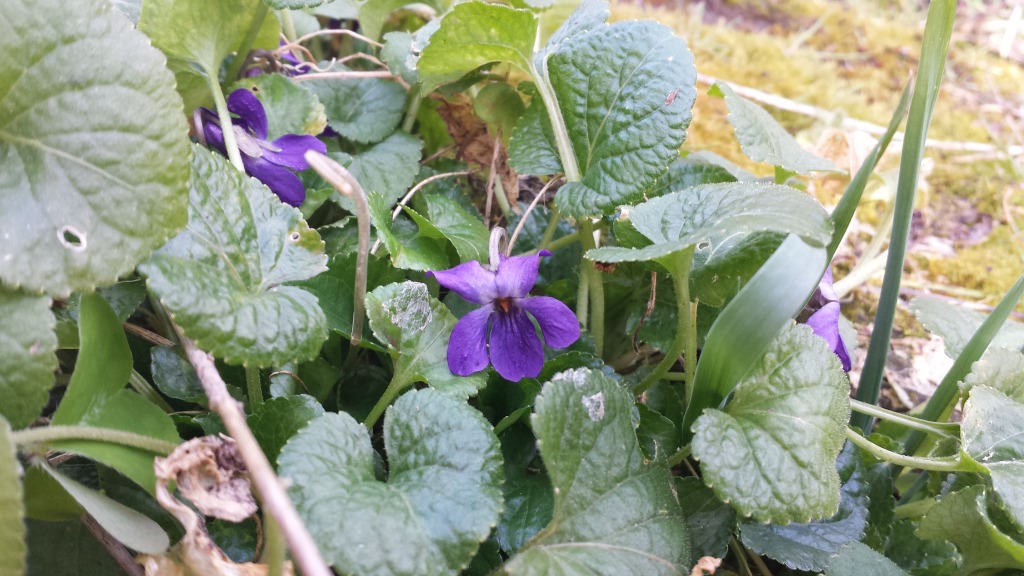 This is a perennial ground cover plant that is good at suppressing weeds. The flowers are very sweet-tasting and make a decorative addition to a salad. The leaves have been used in the treatment of cancer. Please note that violets with yellow flowers are somewhat toxic. (Their leaves are a different shape.)
This is a perennial ground cover plant that is good at suppressing weeds. The flowers are very sweet-tasting and make a decorative addition to a salad. The leaves have been used in the treatment of cancer. Please note that violets with yellow flowers are somewhat toxic. (Their leaves are a different shape.)
Broccoli (Brassica oleracea)
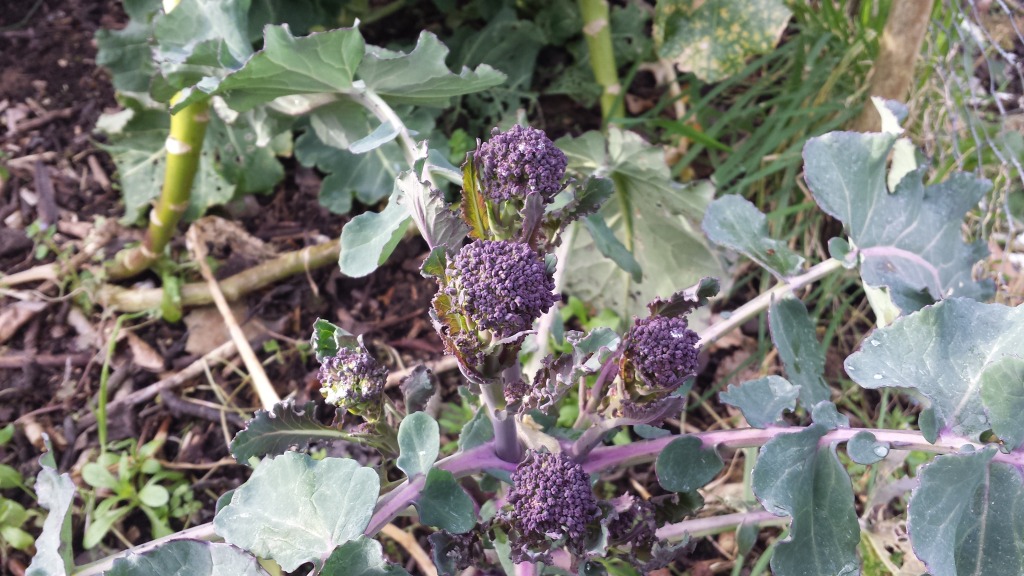 A highly nutritious biennial vegetable. In general, dark green vegetables and green leaves have a far higher content of minerals, vitamins and life force than the pale, anaemic-looking ones like white cabbage and lettuce hearts.
A highly nutritious biennial vegetable. In general, dark green vegetables and green leaves have a far higher content of minerals, vitamins and life force than the pale, anaemic-looking ones like white cabbage and lettuce hearts.
White Purslane (Montia perfoliata, also known as Claytonia perfoliata)
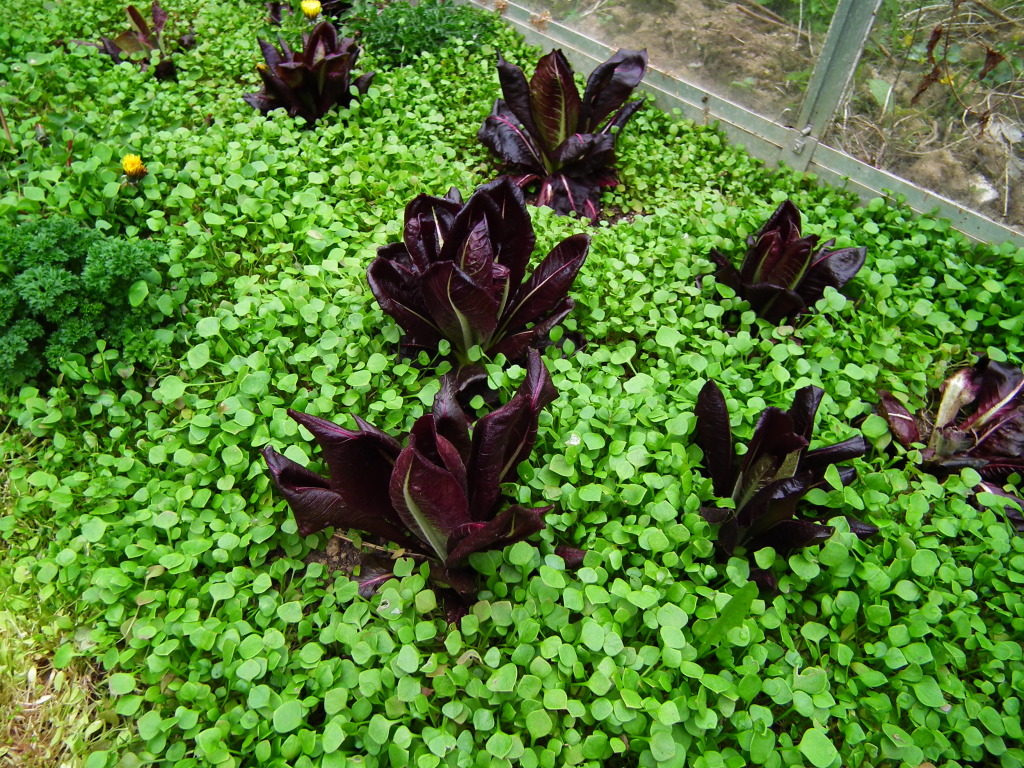
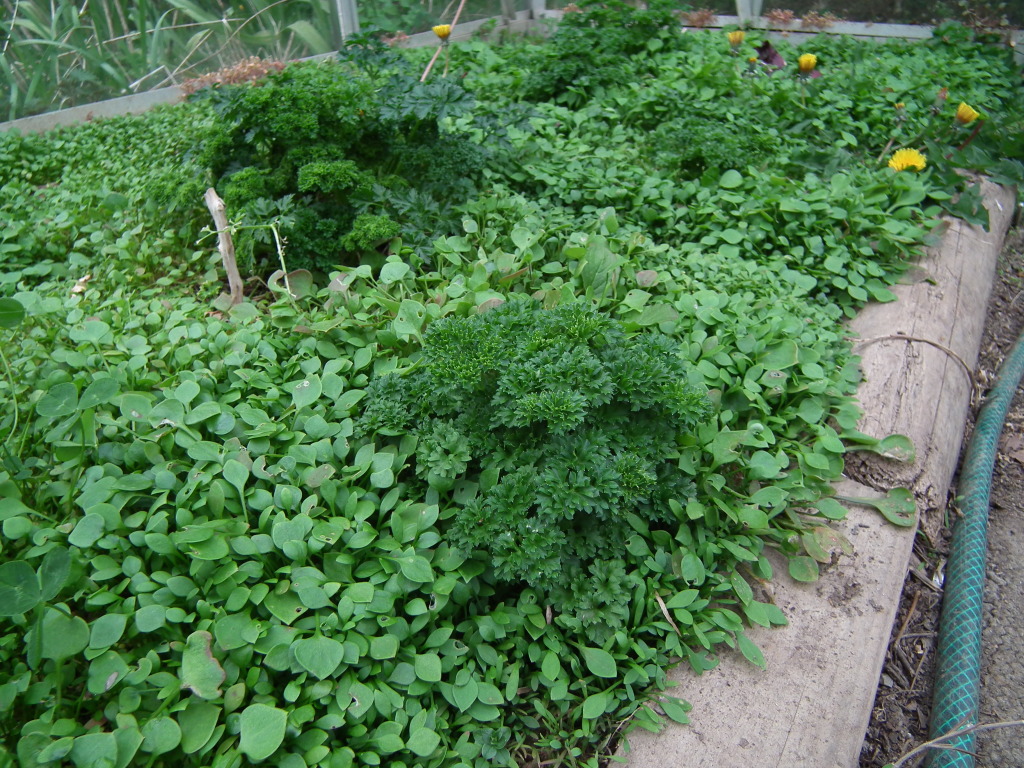
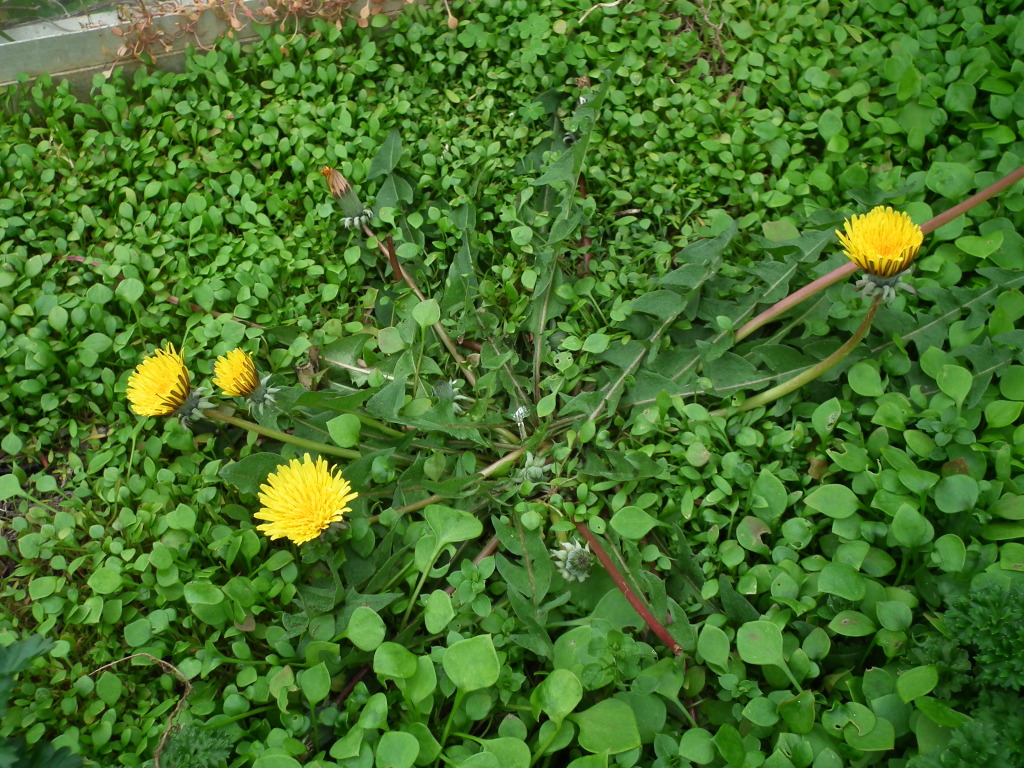 One small greenhouse we have features tomatoes or cucumbers in the summer, and salads in winter and early spring. So we do also grow some annuals! Seen here are Parsley and Chicory (Rossa di Treviso) growing amongst White Purslane. White Purslane has very tender, juicy, mild-tasting leaves, stems and flowers, and it creates an amazing self-sowing ground cover. Dandelion (Taraxacum officinale) and Chicory are highly nutritious mineral rich and tonic salad leaves.
One small greenhouse we have features tomatoes or cucumbers in the summer, and salads in winter and early spring. So we do also grow some annuals! Seen here are Parsley and Chicory (Rossa di Treviso) growing amongst White Purslane. White Purslane has very tender, juicy, mild-tasting leaves, stems and flowers, and it creates an amazing self-sowing ground cover. Dandelion (Taraxacum officinale) and Chicory are highly nutritious mineral rich and tonic salad leaves.
Snowdrops (Galanthus nivalis)

March Walk by Ariadne Fern is licensed under a Creative Commons Attribution-NonCommercial-ShareAlike 4.0 International License.

Photos by by Ajna Fern, licensed under a Creative Commons Attribution-NonCommercial-ShareAlike 4.0 International License.
